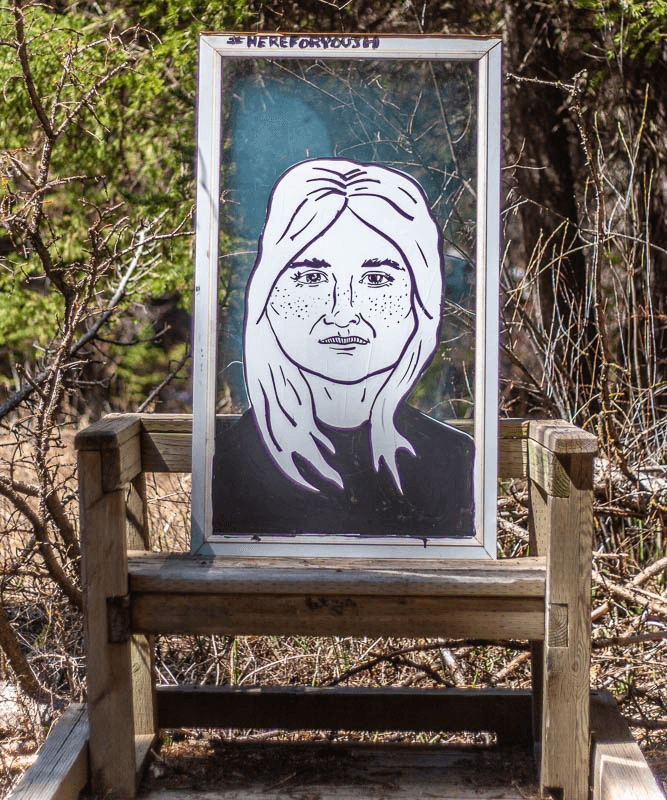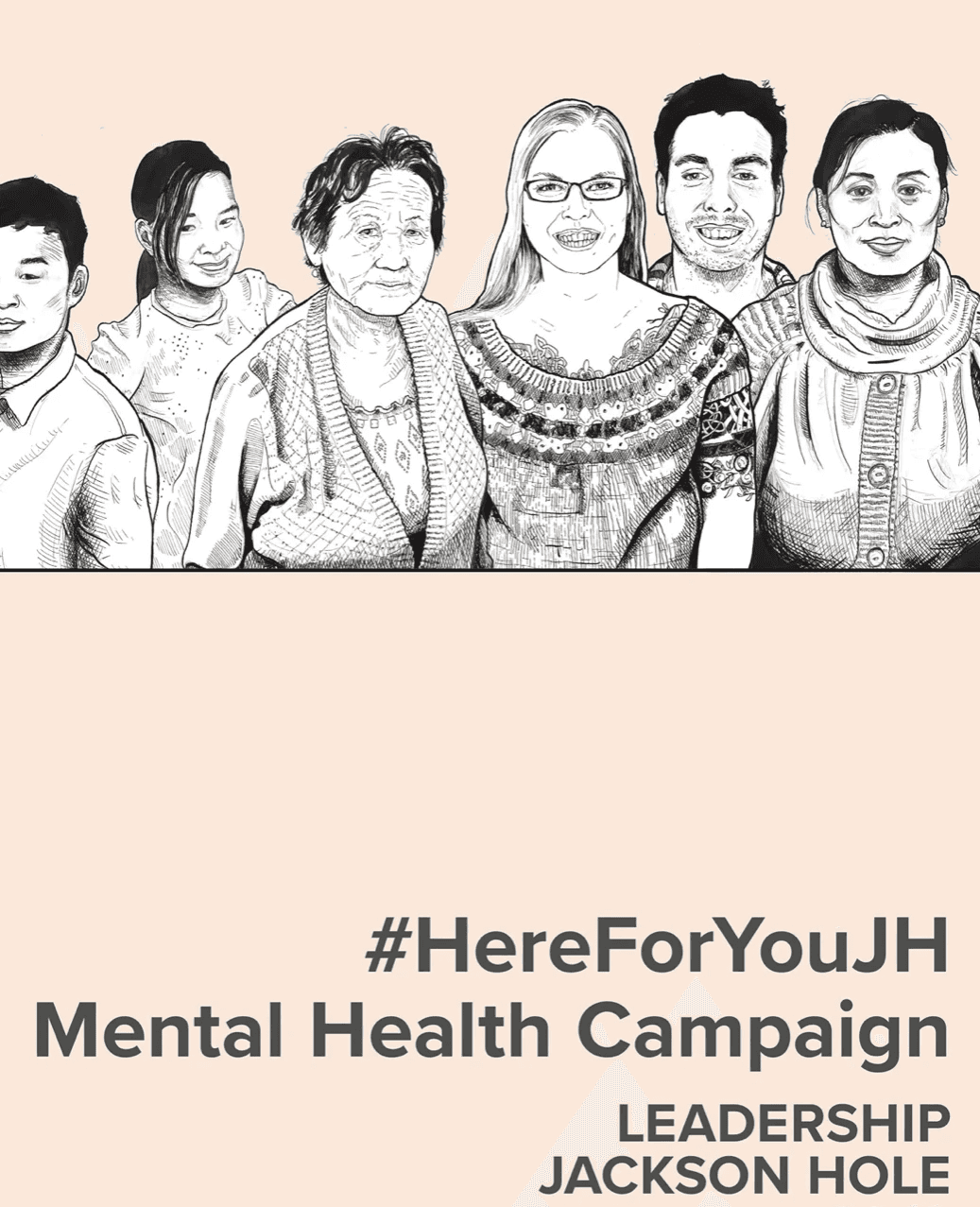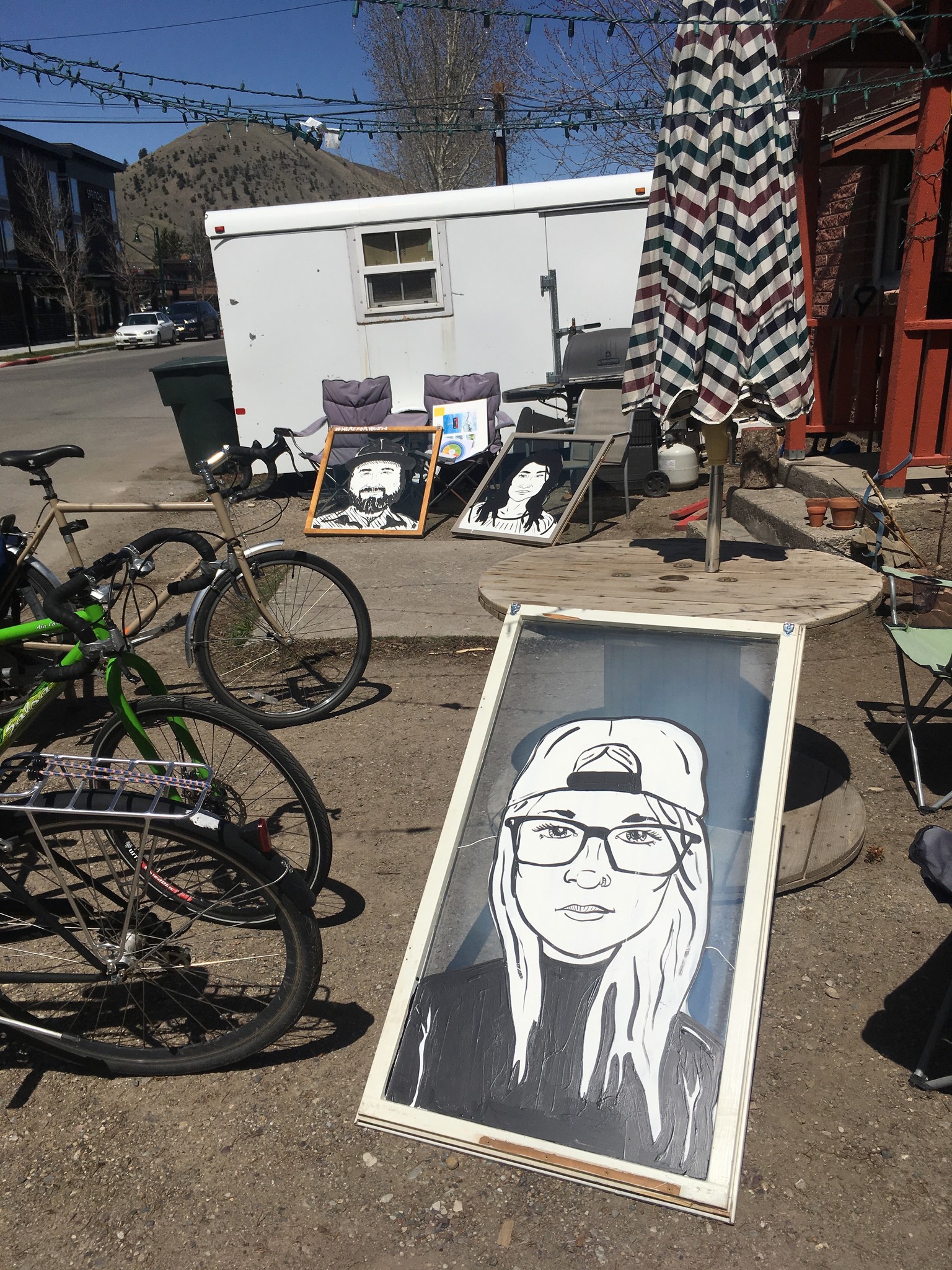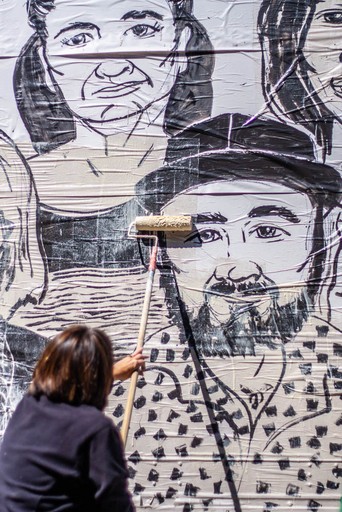The Mountain West region of the United States consistently reports the highest rates of suicide in the country (Pepper, 2017). Suicide rates are one of the key indicators of untreated depression. Mental health carries a stigma that prevents people from discussing mental health issues and seeking help.
In Jackson Hole, there are people suffering from mental health issues who hide their experiences, don’t seek help, or are unaware of local mental health resources.

Discovery Process
A local leadership group consisting of around 20 members met with an advocate and practitioner of mental health support in the Jackson Hole community. The conversation was about current problems and activities involving mental health in the community.
Throughout the conversation, a method known as graphic capture was used to illustrate ideas on a large sheet of paper for everyone to see during the meeting. Images, arrows, boxes, and keywords captured the essence of the conversation and emerging ideas. Capturing a group conversation this way makes sure everyone’s ideas are validated and makes it easy to follow a trajectory in a creative yet organized way.
Visioning the Possibilities
A pitch deck was created to explain the mission of our project, the products, events of our campaign, and estimated costs. It served as an idea catalogue to inspire and shape the campaign. This document moved the campaign from, “what are we doing?” to a clear vision with actionable steps.
With a consistent message, we produced these products:
Stickers
A large public art installation
Coasters
Coffee sleeves
Large posters
Radio spots
Videos
Window painting
Newspaper ads
The campaign used illustrated faces to display mental health as a human experience we all relate to. Illustrations were realistic in style, but not be so realistic that the images would cast a stigma on actual community members.
Prototyping
For the window painting, we ended up painting 45 large downtown windows with faces so the entire town would see them. Windows sourced from ReStore locations were tested with paint and the process of removing paint from the windows without scratching the glass. We also tested windows to make sure that heat from the sun wouldn’t crack or blow out the windows if they got too hot.
Wheatpasting was another experimental process we were using to put up large posters. It uses a mixture of flour, sugar, and water to act as a glue to bind a painted poster to a wall.
The final product became a 39’ x 9’ poster with faces, that was glued to a large trailer that happened to be in a prominent part of town.
Campaign
Dozens of community members gathered on one day to receive details of the day's mission and tutorials on window painting and wheatpasting. From morning to early evening volunteers painted, pasted, and distributed printed products. Information was delivered to local stores with information about the campaign and contact information to local mental health resources.
We also launched pre-produced videos and content to social media, newspaper ads, and scheduled widely-attended talks on the topic of mental health throughout the month. We coordinated with multiple partners to make this campaign a success.





Impact
$5500
Raised and donated to be used for mental health services for locals in need
10,000+
Video views on Facebook and Vimeo
7,000
Coffee sleeves, coasters, and stickers distributed
100+
Individuals and businesses providing funding or asset support
65
Faces painted and wheat-pasted on business windows and large murals
Conclusion
This was a deeply meaningful service design project where leadership capabilities honed in AmeriCorps and Peace Corps were elegantly combined with design abilities. It demonstrates that not projects need to be digital and the impact when projects are guided and created for community members themselves.




